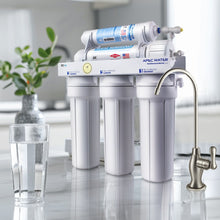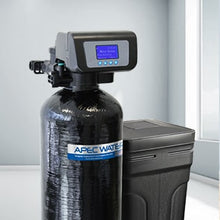EXPERIMENT V - Carbon Treatment for Water Pollution Control
Carbon is used in multimedia filters in drinking water treatment plants to remove organics, in carbon columns for treatment or advanced treatment of wastewater, and in the powder form (powdered ac...
EXPERIMENT IV- Build an Aquifer in a Cup
Many communities obtain their drinking water from underground sources called aquifers. Water suppliers or utility officials often drill wells through soil and rock into aquifers for the ground wat...
EXPERIMENT III - Role of Plants in Water Filtration
This experiment is to help you understand the role of plants in filtering the water moving through a watershed. Experiments can be done to show how a plume of dissolved materials can move through ...
EXPERIMENT II- Non-Point Source Pollution
Storm water flows over impervious (unable to penetrate) surfaces like driveways, sidewalks, streets, parking lots and roofs and is unable to percolate (filter or seep) into the ground. This unfilt...
Experiment I - Water Purification Through Water Cycle
You are probably be familiar with the water cycle (technically known as the hydrological cycle), do you know what it can do to help us from its continuous movement of water over, above, and beneath...
Where is Earth's water located and in what forms does it exist? You can see how water is distributed by viewing these bar charts. The left-side bar shows where the water on Earth exists; about 97 p...
CORRECTLY UTILIZE THE TRADITIONAL WATER TREATMENT
Boiling is the most basic method to make water safe to drink and kill disease-causing microorganisms. When microorganisms such as those that indicate fecal contamination are found in drinking wate...
The convenience of tap water makes many people think of water as an unlimited resource. However, the reality is that only one percent of all the world’s water can be used for drinking. Nearly 97 pe...
Manganese is a mineral that naturally occurs in rocks and soil and may also be present due to underground pollution sources. Manganese is seldom found alone in a water supply. It is frequently fo...
"Iron water" readily stains plumbing fixtures, porcelain, and cooking utensils. When used in the laundry, it soon stains washables with reddish-brown discolorations. "Iron water" also leaves its ...
Corrosion is a phenomenon associated with the behavior of a metal in its environment, which in this discussion refers to the behavior of metals used in plumbing systems in freshwater suitable for...
Finally, read over the following water analysis. Then check whether the statements are True or False in the proper column. These questionnaires can help you understand how to interpret water anal...
Date Collected: 8/15/83 Source: Well Date Analyzed: 8/24/83 Appearance when drawn: Clear, colorless, no odor, "alkali" taste pH: 8.2 Iron: 0.2 ppm Bicarbonates: 52.0 gpg Chlor...
Date Collected: 7/12/83 Source: Well Date Analyzed: 7/18/83 Appearance when drawn: Clear, yellow color, no odor, "iron" taste pH (8) Iron: 2.6 ppm Bicarbonate: 3.9 gpg Sulfate: 1....
Sequestration - Polyphosphates Treatment
There are, in addition, several other techniques for the control of soluble iron in the water. These make use of polyphosphates to keep the iron in solution. Polyphosphates do not remove iron from ...



